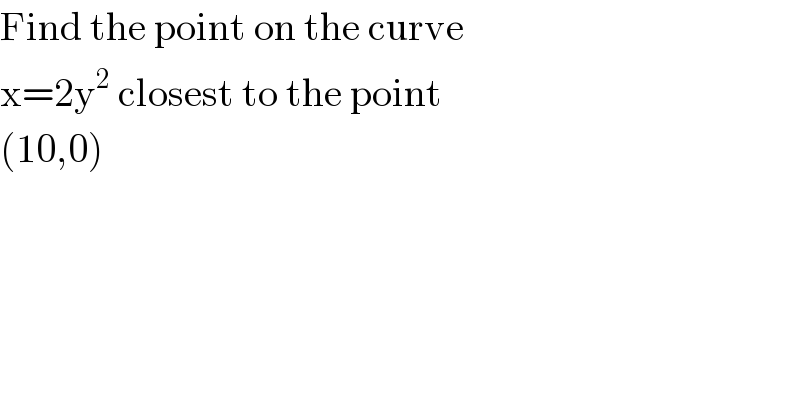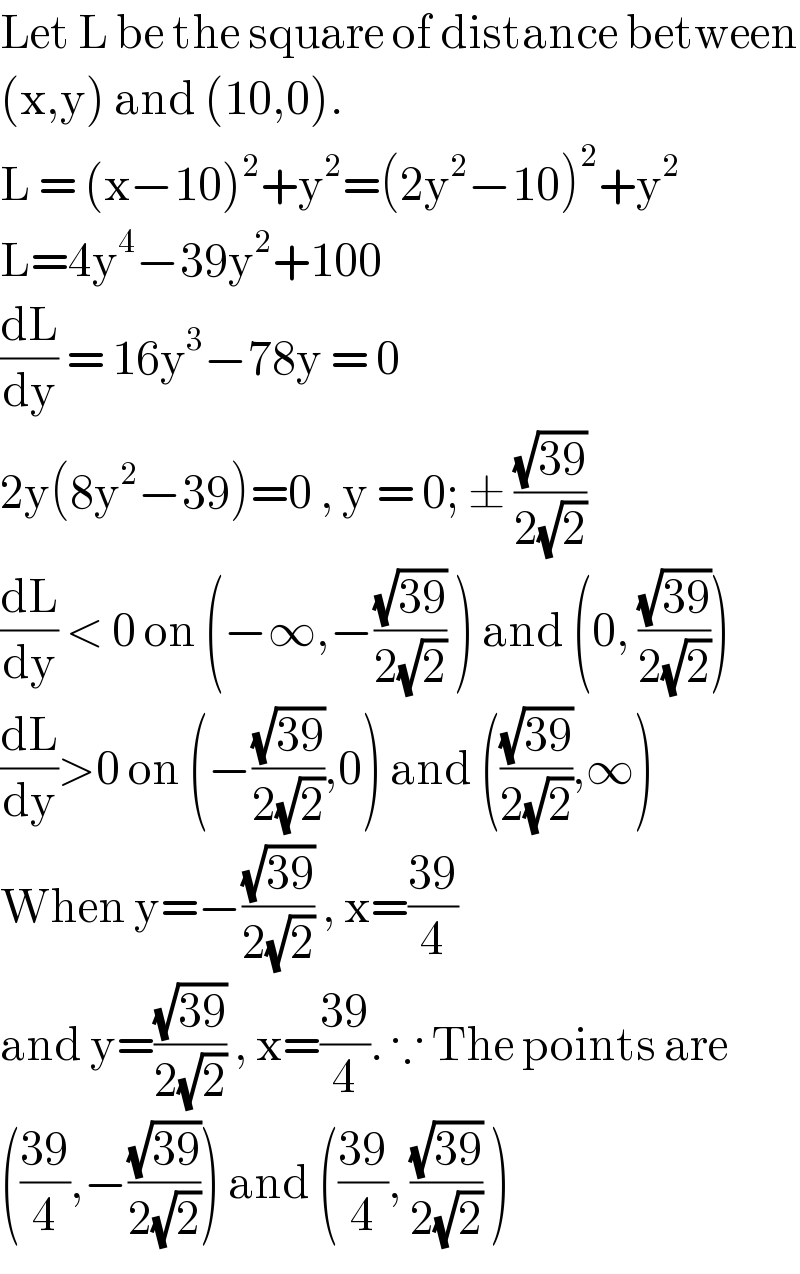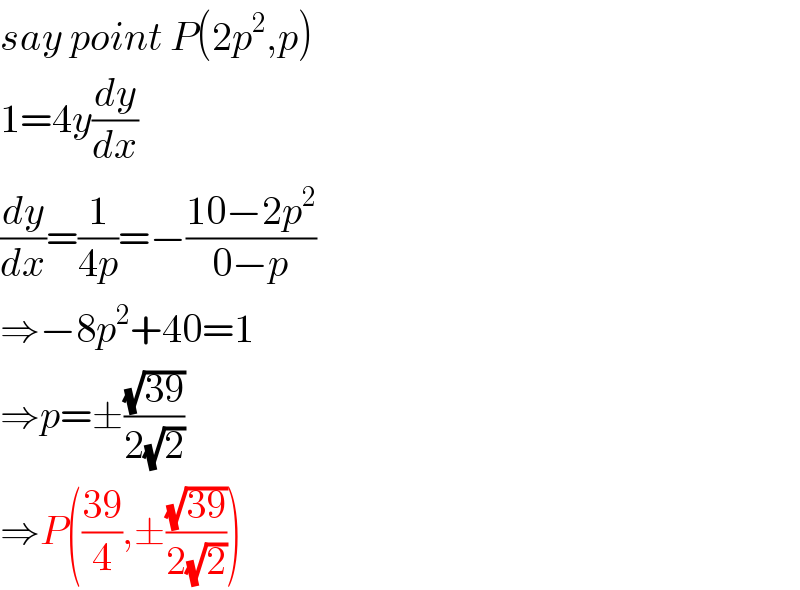
Question and Answers Forum
Question Number 121264 by benjo_mathlover last updated on 06/Nov/20

Answered by liberty last updated on 06/Nov/20

Answered by mr W last updated on 06/Nov/20

Commented by liberty last updated on 06/Nov/20

Commented by mr W last updated on 06/Nov/20

